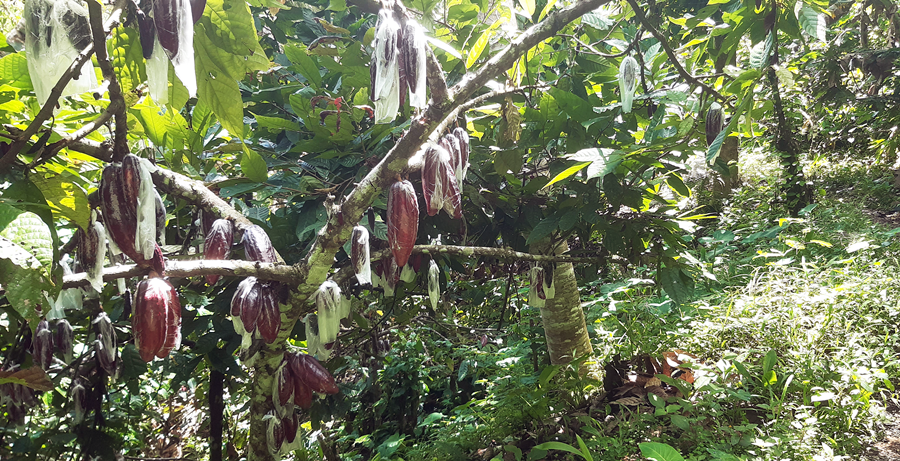By Zarrel Gel Noza

Technical knowledge and sufficient inputs are important to encourage farmers to adopt sustainable farming practices. But is it enough? Researchers say, not always.
Most of the time, the kind of land management that intercrops cacao (what the fruit that becomes cocoa and chocolate is called when it’s on the tree) with other high-value crops requires lots of investment from farmers, which seemingly outweighs the benefits.
In the Philippines, for example, the climate and soils are considered conducive to cacao farming. However, the country’s production is only an average of 10,000 tonnes a year. This is small compared with its neighbours in Southeast Asia, such as Viet Nam and Indonesia. This low volume has been attributed to several factors, such as the high number of cacao trees and plantations with low productivity.